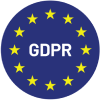In the pursuit of answers, we all need to ask questions. But asking the wrong question or even the wrong type of question can result in wasted time and effort as well as meaningless results. Got questions about questions? We’re here to help!
In this article, we’ll explore close-ended questions (also known as closed-ended and close ended questions).
What is a close-ended question?
Closed ended questions are survey probes that limit the respondents’ answers to a limited set of options, the lowest denominator of the latter being “yes” or “no.” Companies seeking quantitative data use this question category, usually to test hypotheses and monitor trends.
Though it might seem an overly simplified answer, closed-ended questions are (surprise!) the opposite of open-ended questions. Open-ended questions are often used to allow survey participants to expand their opinions, often to provide further explanation of a previous close-ended question in many cases. For example:
- “How likely are you to recommend our brand on a scale from 0 to 10?” – A close-ended question.
- Can you please give us insight into why you rated our brand the way you did in question (1)?” – An open-ended question.
Two other close ended questions examples are as follows:
- Agreement rating questions: On a scale of 0 to 5, how much do you disagree or agree with the following statement? “The Acme agent helped me fast and seamlessly with my issues by demonstrating patience and technical intelligence.”
- Multiple choice questions: Which of the following best describes our self-service client support you interacted with this morning?
Solved but took too long | Solved as expected | Solved better than expected | Unsolved and frustrated
Benefits of close-ended questions
Closed-ended questions lean more toward reflex reaction responses and away from the stop-and-think answers associated with open-ended probes. Comparing them to the latter’s disadvantages provides an insightful perspective, so let’s do that.
1: OBJECTIVITY
- Open-ended questions: Even though surveys are mostly anonymous, the minute you ask people to text in their viewpoints, be a critic, or give advice as if they’re experts, it may put them out of their competency or comfort zones. As a result, they sometimes don’t express their true feelings on the matter, instead telling you what they think you want to hear or expect them to answer. In other words, the responses contain bias.
- Closed-ended questions: Conversely, these are predefined to trigger spontaneous reactions, disallowing emotional drivers to enter the equation. On the other side of the coin, this category has limited capability in unearthing the reasons for discontent or happiness. Therefore, calculated integration of the two types makes good sense
2: TIME
- Open-ended questions: Long surveys (over ten minutes) are unpopular, reflecting unacceptably low completion rates. Respondents complain about survey fatigue (leading to poorer data quality and non-completions) and an unengaging user experience. Open-ended questions are the prime culprits behind survey abandonment. Why? They require too many long-winded responses.
- Close-ended questions: help you keep the survey short and sweet, with fast answers to easy-to-understand probes requiring nothing more than ticking a box. As a result, response rates are high.
Note: A closed-ended approach shouldn’t exclude integrating with qualitative data-seeking but with moderation and strategic forethought.
3: MEASUREMENT & COMPARISON
- Open-ended questions: provide a wealth of qualitative data and insights into feelings and cognitive motivation if extracted professionally. Sogolytics and other expert customer experience entities can provide software with language and voice-tone sensory algorithms to pick up on satisfaction (or the opposite) at crucial touchpoints. However, any way you cut it, the conclusions are not quantitatively laser-accurate (in exact percentages and statistical metrics), even when the technology rates them to create priorities.
- Close-ended questions: minimize ambiguity and make comparability a cinch. They are also easily quantifiable to decimal point accuracy,
Here’s an example to illustrate:
Let’s assume 100 real-time respondents take a survey that asks “How much did our online client support help you solve your pain points?” Consider the following sample responses on a 5-point scale:
- 20% gave a rating of zero.
- Another 20% gave a top rating of five.
- 40% rated the support as a two—10% a three, and 10% a four.
A valid conclusion is that 60% were disappointed, 10% were neutral, and 30% were happy. With numerous questions in the survey (not just this one), metric calculations become significantly more complex. However, it’s all in a day’s work for Sogolytics’ data analytics and AI-enhanced software to generate a versatile and flexible look at meaningful quantitative statistics. It does it in the blink of an eye to suit one’s customized requirements.
How to use close-ended questions effectively
Best practices for quantitative data surveys
The logic behind using closed-ended questions effectively relies on having a vision for your research before you begin. From there, there are excellence guidelines one must adhere to that yield the best results. Here are my suggestions:
- Mutually exclusive options: Each closed ended question must reflect mutually exclusive options where applicable. In other words, if a question inquires about an event occurring in four different ways, the respondent can only answer yes to one. Why? Overlap isn’t possible. For example:
-
- Do you use our maintenance? (only one can apply):
All year | on a six-month contract | monthly renewable | None of these.
- Do you use our maintenance? (only one can apply):
-
- Language: The question must be understandable to your audience—aligning with education demographics plus readership level—unambiguous and concise for fast response.
- Analytic-centric: The survey framework should merge with software that can aggregate, subdivide, and combine response numbers to translate into customized metrics, percentages, and trends with pinpoint accuracy.
- Relevance: Avoid asking questions that add little to others in the survey or contribute little to vision insight.
- Engage respondents: Keep the survey duration under ten minutes to gather information quickly. Mix up the options to hold respondent interest by using yes/no, multiple choice, rating scales, or dropdown menus that suit the responses you’re looking for.
- Integrate with open-ended questions: Use open-ended questions sparingly to:
- Keep the survey short.
- Unearth the reasons and motivations behind vital quantitative factual data generated. For example:
- “I loved the recent loyalty program rewards I received leading into Christmas.”
I strongly agree | I somewhat agree | I found some gaps that frustrated me | I strongly disagree (the respondent can only pick one mutually exclusive option) - Please tell us why you rated the previous question the way you did. (an open-ended question to get a deeper insight into the customers’ thoughts).
- “I loved the recent loyalty program rewards I received leading into Christmas.”
Examples of closed-ended questions
Every company offering services within its value proposition knows that customer pain points revolve around things like technical glitches, brand returns, accounting confusion, fraudulent and hacking activities, insurance claims, agent interactions, and more. They understand that it takes only one obstructive touchpoint to derail a customer’s journey, even the most loyal ones. Similarly, employee retention or churn hangs on continuous engagement that can go haywire if team or management experiences create stress.
The trend is to punctuate the following with pulse, regular interval, and various satisfaction surveys:
- Employee examples – After staff reviews, reaching team project milestones, or leaving the onboarding process as a fully-fledged team member.
- Customer examples – After call-ins, special events, and unique promotions
What is a pulse survey for employees and customers? Businesses conduct short one- or two-question surveys to connect to real-time interconnections with customers (or employees) minutes after call center conversations, job reviews, interviews, closed deals, maintenance visits, or promotions to assess sentiment or problematic touchpoints. Think of it as the proverbial quick thumb on the pulse after an exercise to detect abnormalities in a continuous feedback system.
The objective of all surveys (pulse or otherwise) is to measure the performance temperature and know that one’s strategies are going to plan.
Types of closed-ended questions
Here are question examples compartmentalized into eight primary closed-ended question categories:
-
-
Multiple Choice
Based on your engagement with our advisors, how likely are you to use our services again?
☐ I definitely will
☐ I likely will
☐ Maybe
☐ I likely won’t
☐ I definitely won’t -
Rating Scale
Please rank your job review today on a scale from zero to five, where five is “Outstanding,” and zero is “Extremely poor” on the following constructs:
- Constructive feedback – 0 1 2 3 4 5
- Manager objectivity – 0 1 2 3 4 5
- Motivating – 0 1 2 3 4 5
- Focused on the right job description responsibilities – 0 1 2 3 4 5
-
More Than One Choice
What attracted you to buy from us a second time (Click all that applies)
☐ Our pricing
☐ Our brand value
☐ Our shipping speed
☐ Our client support -
Ranking Order
Please rank the following from 1 (most crucial) and 4 (least important) in what motivated you to accept the position with us:
☐ Company culture
☐ Remuneration
☐ Opportunity to advance my career
☐ Opportunity to advance my training -
Agree/Disagree Type Close Ended Questions (also known as Likert-style)
What’s your agreement level with the following?
“I found your customer support easy to engage with and navigate.”
☐ Strongly Agree
☐ Agree
☐ Undecided
☐ Disagree
☐ Strongly Disagree -
Dichotomous Questions
Our company’s actions match our promises.
☐ True
☐ False -
Net Promoter Score (NPS) Questions
Any article on close-ended questions would be incomplete without mentioning NPS questions. This question type highlights overall customer or employee performance like no other. Presented for both customers (NPS) and employees (eNPS), this question asks participants the following questions on a 0-10 scale. Read more about NPS here.
-
- “How likely are you to recommend our brand to a friend or family member?”
- “How likely are you to recommend our company as a great place of employment?”
As noted above, following up the closed-ended NPS question with an open-ended question asking participants to explain their answer creates a simple and powerful Net Promoter Score survey. Read more about NPS here.
-
-
Customer Effort Score (CES) or Customer Satisfaction (CSAT) Questions
CSAT and CES are theme questionnaires that favor scale rating questions about satisfaction and level of ease or challenge in resolving an issue.
- Customer Effort Score:
- This question is sometimes asked to determine the customer’s level of effort, although it is often phrased to indicate that the responsibility for an easy experience rests with the company.
- Please rate your level of agreement with this statement: The company made it easy for me to solve my issue.
- Strongly Disagree (1) ranging to Strongly Agree (7)
- How challenging was it for you to address your issue?
- Very Challenging (1) to Very Easy (5)
- Please rate your level of agreement with this statement: The company made it easy for me to solve my issue.
- A good open-ended question like this works well in combination: “What more can our team do to make the problem disappear?”
- This question is sometimes asked to determine the customer’s level of effort, although it is often phrased to indicate that the responsibility for an easy experience rests with the company.
- CSAT
- The most common way for this question to be asked is a simple satisfaction scale rating either a specific interaction or an overall experience.
- How satisfied were you with the service you received?
- Very Dissatisfied (1) to Very Satisfied (5)
- How satisfied were you with the service you received?
- Again, an open-ended question is a good opportunity for learning more about the rating, and survey logic can be used to ask relevant follow-up questions, dependent on the participant’s response.
- Sorry to hear. How could we improve your experience in the future?
- Happy to hear! What stood out about your experience?
- The most common way for this question to be asked is a simple satisfaction scale rating either a specific interaction or an overall experience.
- Customer Effort Score:
-
Conclusion and FAQs
Finding the perfect closed ended questionnaire example that fits your company best requires professional assistance, such as a one-stop software resource pool offered by Sogolytics. Our company has built its reputation on years of experience extracting the most insightful quantitative data imaginable.
Our AI-powered solutions produce results fast and seamlessly, customizing your one or two-question pulse surveys or more complex ones. The sophistication level displayed by modern technology has displaced days and weeks of HR routine tasks with minutes or hours of data analytic automation. And it’s yours today at affordable prices.
Talk to our team to connect your brand to closed-ended question surveys that get to the crux of touchpoints in employees’ and customers’ journeys with your company.
FAQs
What is a close-ended question?
A: A survey probe that limits the respondents’ answer to a limited set of options, the lowest denominator of the latter being “yes” or “no.” Companies seeking quantitative data use the close-ended question methodology to test hypotheses and monitor trends.
Can I use a close ended question with an open-ended one?
A: Yes, it’s advisable to derive extraordinary insights. Read the article above for many examples.
What are the primary benefits of using closed-ended questions in a survey?
A: Highly objective with little bias, time-friendly, easily measurable, accurate quantitative results that align with data analytic advantages, easily comparable on an apples-to-apples basis. Read more under benefits in the article above.
What are the primary properties of sound closed-ended questions?
A: They must revolve around:
- Mutually exclusive options where applicable
- Audience readability and education levels.
- Customized metrics, percentages, and trends with pinpoint accuracy.
- Relevance to your research vision.
- Integrate with open-ended questions.
- Engaging your respondents so that they complete the survey














